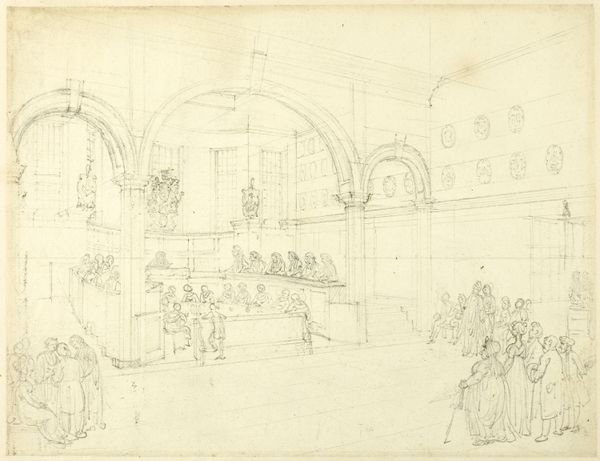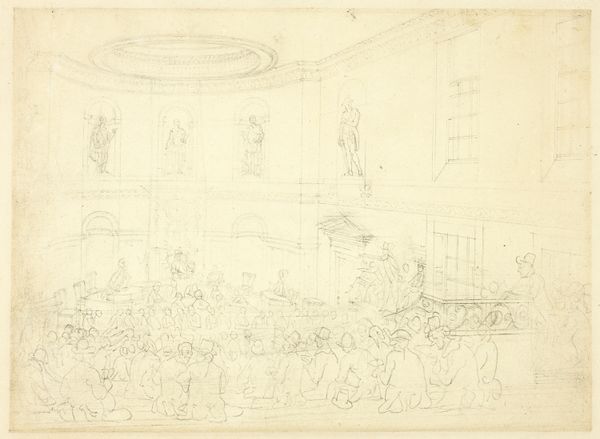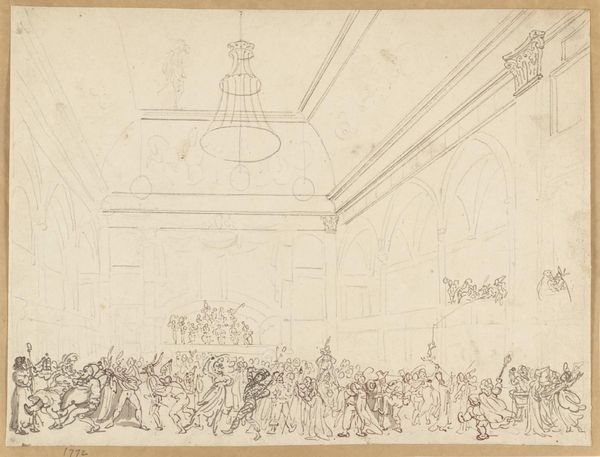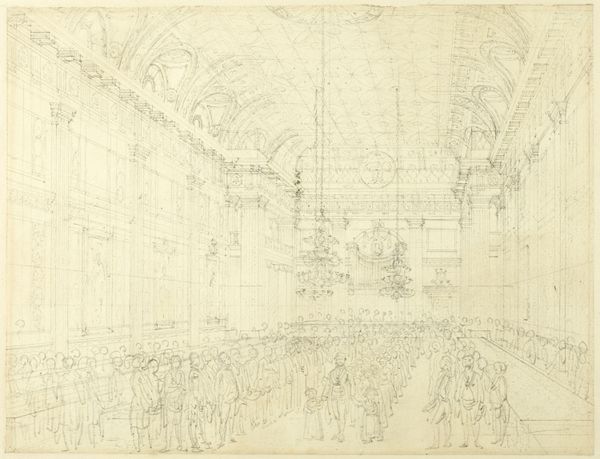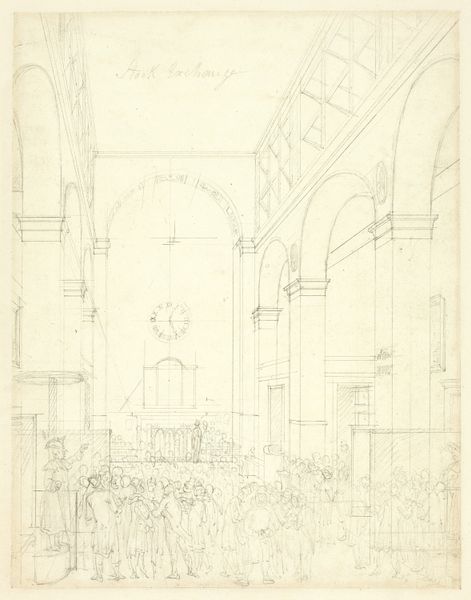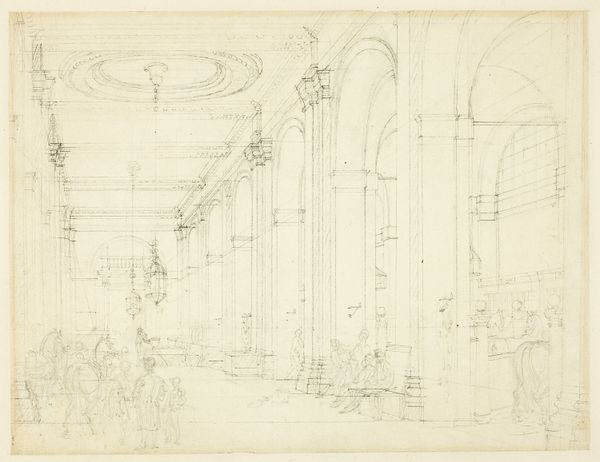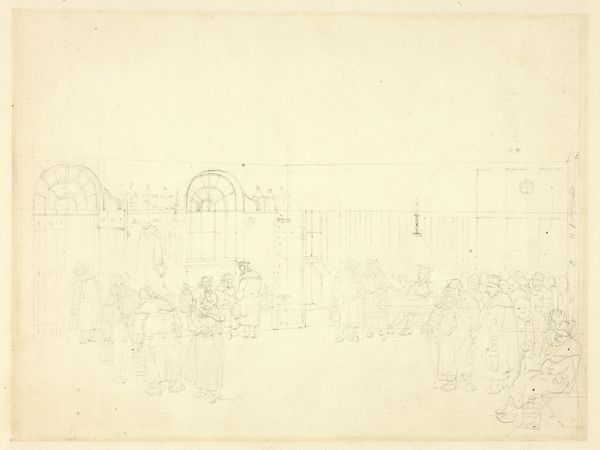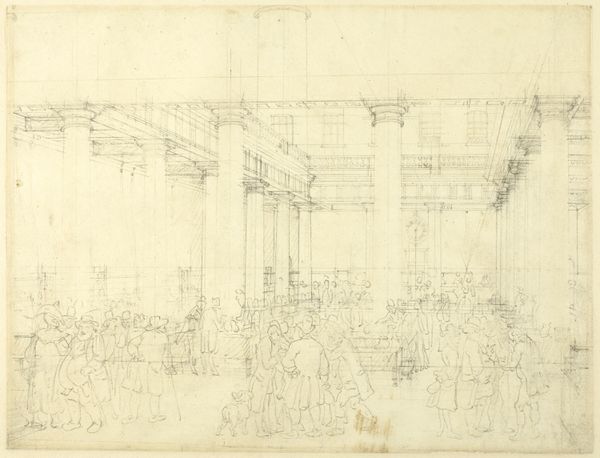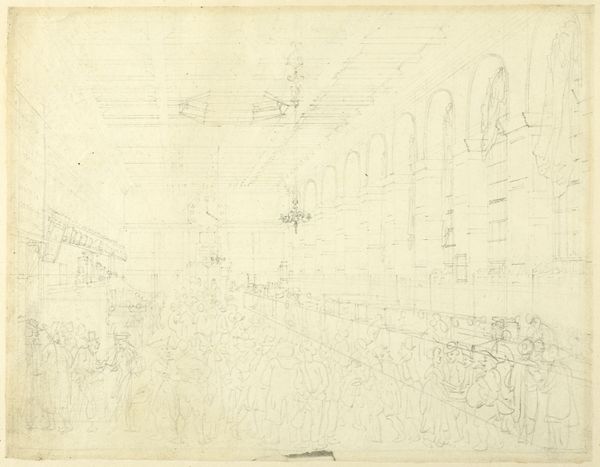
Study for Guild Hall, Examination of a Bankrupt Before His Creditors, from Microcosm of London c. 1808
0:00
0:00
drawing, print, paper, graphite
#
architectural sketch
#
drawing
#
quirky sketch
# print
#
sketch book
#
paper
#
personal sketchbook
#
sketchwork
#
england
#
pen-ink sketch
#
water
#
pen work
#
graphite
#
sketchbook drawing
#
storyboard and sketchbook work
#
sketchbook art
Dimensions: 202 × 258 mm
Copyright: Public Domain
Editor: Here we have Augustus Charles Pugin's "Study for Guild Hall, Examination of a Bankrupt Before His Creditors, from Microcosm of London," circa 1808. It's a drawing and print on paper with graphite. There's a palpable sense of tension and anxiety in the room depicted. It feels claustrophobic despite the grand architectural setting. What can you tell us about the scene's broader social context? Curator: Well, it’s more than just the architectural setting we're seeing, but also a specific societal moment being captured here. Look at the details Pugin chose to include. The ‘examination of a bankrupt’ wasn't just a personal failing; it was a public spectacle and an institutional procedure that exposed the individual's financial life for scrutiny by their creditors, underlining a clear power imbalance. What sort of power do you see reflected in the drawing? Editor: The architecture almost seems to dwarf the people, highlighting the dominance of the institution, I guess. The composition emphasizes that—the windows are massive, the hall feels very formal and regulated. Does the title itself reveal something about public perception at the time? Curator: Absolutely. Consider "Microcosm of London"—the title suggests a lens through which we view all of London’s society. Including the plight of bankrupt individuals in this 'microcosm' was very deliberate. It suggests economic fragility was an inherent aspect of the booming metropolis and its social fabric. Are we looking at something objective, or is there social commentary? Editor: Now that you mention the "Microcosm" title, I’m thinking there's a critical gaze. The inclusion of bankruptcy highlights the often-unseen underside of London's success. It wasn't all prosperity and progress, right? Curator: Exactly. And consider where these prints were displayed and sold. Were they intended for all members of the public or a wealthier class? Were they a warning? That institutional distribution impacts meaning and reception too. Editor: That’s a great point. So much more to this seemingly simple sketch than I first thought. I’ll remember to consider not just what’s in the artwork but who had access to it. Curator: Indeed, that relationship shapes how society and art come to reflect and alter history and ideas, it’s that intersection I strive to study.
Comments
No comments
Be the first to comment and join the conversation on the ultimate creative platform.



